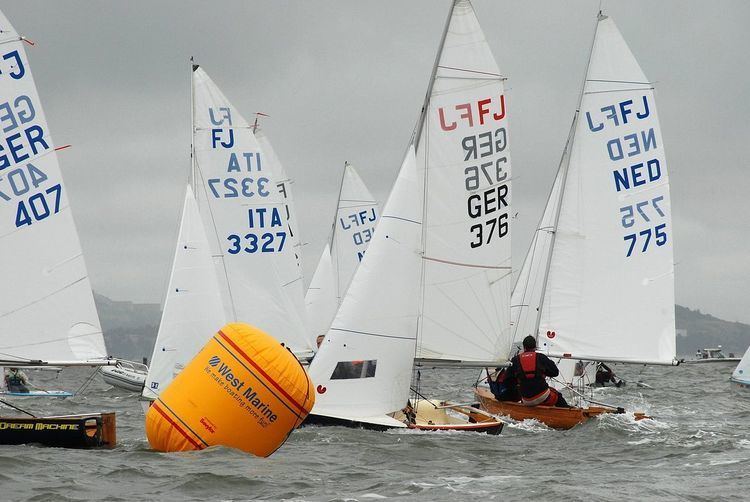Crew 2 LOA 13 ft 3 in (4.04 m) Mast Length 20 ft (6.1 m) | Hull weight 210 lb (95 kg) Beam 4 ft 11 in (1.50 m) Spinnaker area 80 sq ft (7.4 m) | |
 | ||
The International Flying Junior or FJ is a sailing dinghy which was originally designed in 1955 in the Netherlands by renowned boat designer Van Essen and Olympic sailor Conrad Gülcher. The FJ was built to serve as a training boat for the then Olympic-class Flying Dutchman. The FJ has a beam of 4'11" and an overall sail area of 100 square feet (9.3 m2). These dimensions make the FJ an ideal class to teach young sailors the skills of boat handling and racing.
In 1960 the Flying Junior formed its own class organization and by the early 1970s the Flying Junior was accorded the status of an International Class by the International Yacht Racing Union, the precursor to the International Sailing Federation. This status indicates that the class applies to strongly restricted class rules and holds regularly scheduled international regattas.
All documents about the history of the International FJ (Flying Junior) can be looked up at the Nederlands Scheepvaartmuseum in Amsterdam.
Today the FJ is sailed in Japan, Canada, Germany, Italy, Belgium, the Netherlands,Slovenia and the United States. In the US, many high school sailing and Intercollegiate Sailing Association programs own fleets of FJs. The college and high school programs in the US use a version of the FJ known as the Club FJ. This boat is slightly different from the International FJ in that it does not use Trapeze and it has a smaller, non-spherical Spinnaker.
Limitations to the equipment series for an FJ are; 1 mainsail, 2 jibs, 1 spinnaker (optional), 1 mast, 1 boom, 2 spinnaker poles, 1 centerboard and 1 rudder.
